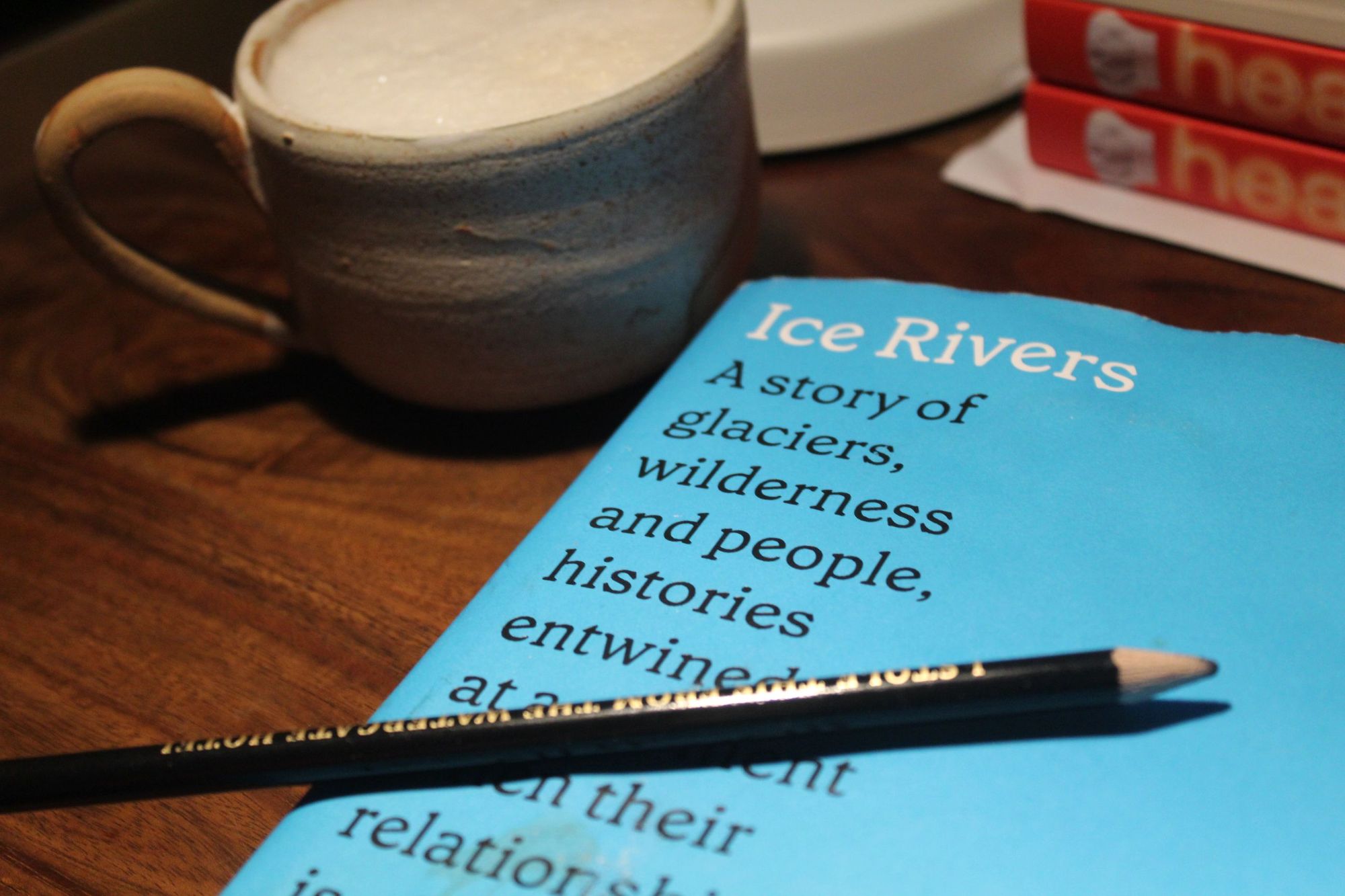Our November pick for Book Club is ‘Ice Rivers’ by Professor Jemma Wadham, one of the world’s leading glaciologists. The full title of the book reads: ‘Ice Rivers: A story of glaciers, wilderness and people, histories entwined, at a moment when their relationship is about to change forever.’ And as much Ice Rivers is very much all of those things, it’s also Wadham’s personal story - a tale of a life spent travelling to the extremes of the world in the name of science. The book follows Wadham from her university days and earliest research project, on the Arolla glacier in Switzerland, to the Finsterwalderbreen in Svalbard, and on to Greenland, the Himalaya, Antarctica and the Peruvian Andes from there (with aptly-beautiful descriptions of each).
Wadham describes her own career as a “grand detective story”, her goal “to piece together clues to help understand how glaciers behave and what they hold for us as humans”. The story is delivered in the shape of a round-the-world 190-page read. There's an abundance of weird and wonderful information about glaciers - historical, scientific, cultural and anecdotal - but the book is most fascinating as a behind-the-curtain peak into the life of a globetrotting glaciologist.

“I remember practising ice-axe arrests by throwing myself down a practically vertical slope,” Wadham writes of Arolla, where we learn how glaciers were “considered the resting place of ghouls and evil spirits in medieval times”, how they’ve shaped our world and what life lies below.
If the West Antarctic Ice Sheet were to collapse, say goodbye to East Anglia, low-lying islands like the Maldives, and coastal nations and cities built on reclaimed land, such as the Netherlands, Boston and large swaths of coastal land throughout South East Asia.
In Svalbard we join Wadham on dodgy skidoo trips over “sections where the sea ice had shifted and opened up small cracks”. Wadham and her team stay in tents and tiny, rust-red wooden huts, and set trip wires to alert them if polar bears wander in. “I quickly realised one key thing about fieldwork - if you think you are there to work, you’re gravely mistaken,” writes Wadham. “You’re actually there to survive, and perform some research along the way - if you’re lucky.”
Wadham watches as two polar bears engage in “energetic mating rituals” yards from her tent - “I bet even David Attenborough hasn’t seen this, I thought.” - takes us to the general store “where we bought supplies of everything from tinned meatballs to rifle bullets”, and shares her passion for Massive Attack, listened to on a Sony Walkman. We learn what a party under the midnight sun in Greenland looks like, and why one would belay down, and dump dye into, glacial waters.
Wadham’s memories of Antarctica opens as all should - from the perspective of a penguin. She experiences even tougher colds in Patagonia, where “in just a few months, our field camp received about as much rain as the City of Bristol receives in a whole year.” And through the Tibetan prayer flags in the Himalaya, and tips on how to urinate in Antarctica, climate change and glacial melt are never far away.
“If the West Antarctic Ice Sheet were to collapse,” Wadham writes, “say goodbye to East Anglia, low-lying islands like the Maldives, and coastal nations and cities built on reclaimed land, such as the Netherlands, Boston and large swaths of coastal land throughout South East Asia.”
We learn that Greenland’s melting ice sheet is the greatest glacier contributor to global sea-level rise. Greenland’s tidewater glaciers have “receded by over one hundred metres a year on average between the years 2000 and 2010”. Wadham writes of how melt is releasing fossilised carbon, and how it could have untold impacts on river health around the world, as well as our global CO2 levels.
“Climate change might at times feel like an abstract concept,” Wadham writes, “but when you experience a spectacle like this [...] the conclusion is undeniable.” Indeed, one of the great successes of Wadham’s book is to bring energy and life to the discussion of glaciers and melt, a topic which visualises climate change so well, but can so often seem inaccessible and dry.
‘Ice Rivers’ is an excellent breakdown of why our glaciers are melting, why we should care, and what exactly we’re going to lose if we do lose our glaciers to climate change. As Wadham concludes: “One thing I’ve learnt is that as human beings, we are inseparable from our glaciers,”
Inspired? Check out our glacial adventures like wildlife trips in Svalbard and Greenland and browse our full range of trips, benefiting local communities and backing conservation.
This article contains affiliate links. Which basically means we make a little commission if you click through and buy something. It doesn’t cost you anything, and it just means we can do more good things in good places.

